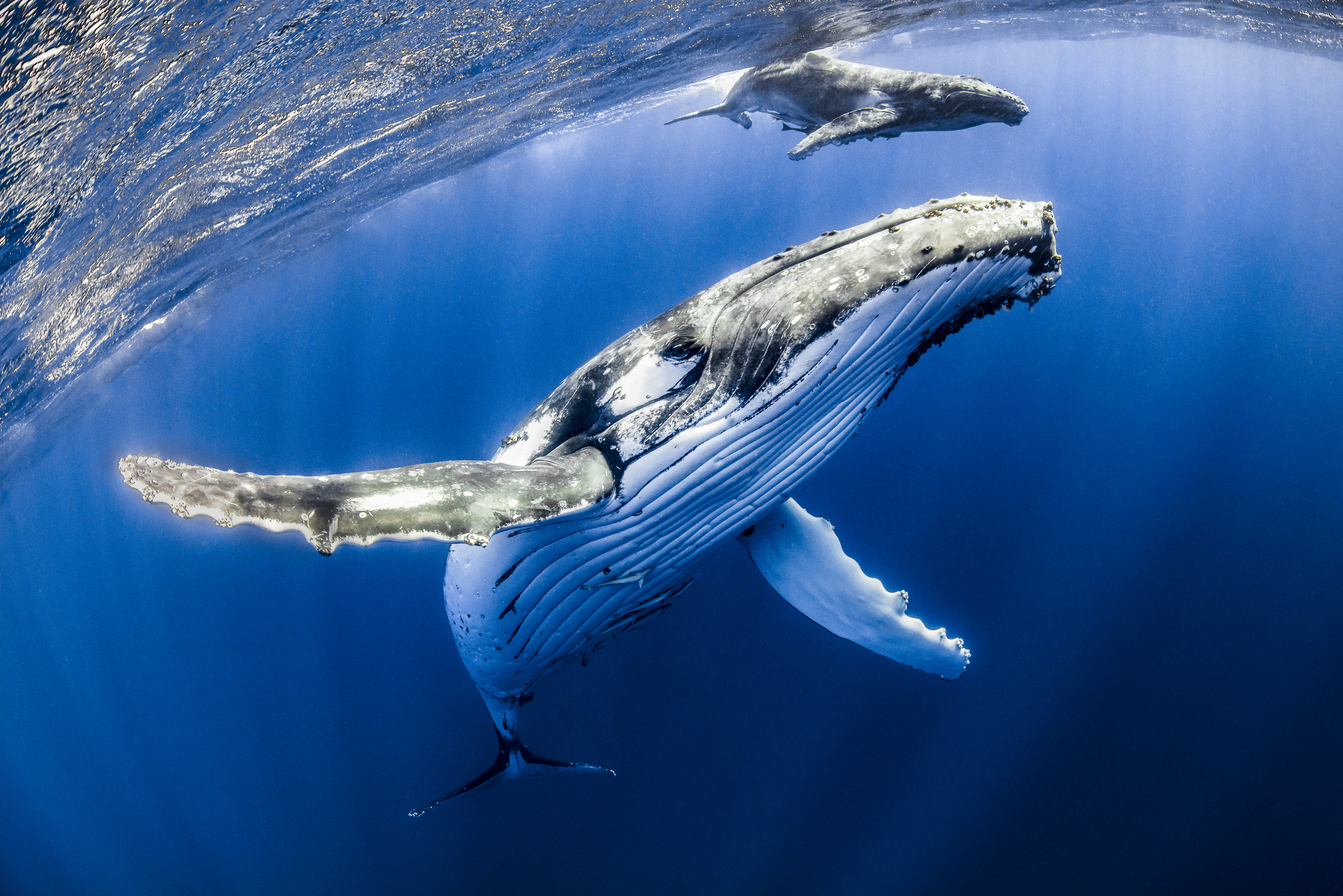Humpback whale swallows lobster diver before spitting him out
The diver says he was in the whale's mouth for 30 seconds.

A humpback whale recently swallowed a Cape Cod lobster diver.
This is a highly unusual event, but one expert told Live Science that there are certain types of behaviors that could have led to the man being swallowed — such as diving too close to the whale's normal food.
Michael Packard was 45 feet (14 meters) deep in the coastal waters off Provincetown, Massachusetts, on Friday (June 11), when he was suddenly gulped inside the mouth of an enormous marine animal.
"All of a sudden, I felt this huge bump, and everything went dark," he told WBZ-TV News.
Related: 8 Human-animal encounters that went horribly wrong
At first he thought he had been attacked by a shark, as great whites frequent the area, but he soon realized he couldn't feel any teeth.
"Then I realized, 'Oh my God, I'm in a whale's mouth ... and he's trying to swallow me,'" Packard told WBZ-TV News. "And I thought to myself 'OK, this is it — I'm finally — I'm gonna die.'" Packard's thoughts turned to his wife and his two sons, ages 12 and 15.
Get the world’s most fascinating discoveries delivered straight to your inbox.
He estimated that he remained trapped inside the mouth of the leviathan for 30 seconds, and he was still able to breathe through his scuba respirator. But then the whale, clearly keen to remove its unwelcome, and inedible, guest, surfaced, shook its head and spat him out.
"I just got thrown in the air and landed in the water," he said. "I was free and I just floated there. I couldn't believe … I'm here to tell it."
Packard was hauled back onto his fishing boat by his topside crew mate, who had been anxiously surveying the water's surface for signs of bubbles from Packard's oxygen respirator. Astonishingly, Packard survived the biblical encounter with no greater injury than a dislocated knee.
Getting swallowed by any marine creature is hardly going to make anyone's day, but Packard was somewhat fortunate that he was grabbed by a baleen whale. Despite being one of the largest whale species — growing up to 60 feet (18 m) long, and weighing an impressive 40 tons (36 metric tons) —the school bus-size giants predominantly dine on tiny sea creatures such as small fish, krill and plankton, meaning their throats are usually only 4 to 8 inches (10 to 20 centimeters) wide. No one gobbled up by a humpback could end up in the beast's stomach, but the creature's 4 ton (3.8 metric tons) tongue could easily crush a person.
Rather than teeth, humpback whales have 270 to 400 nail-like strands called baleen plates. They hunt by opening their mouths to about 90 degrees before lunging at high speed with a swift swipe of their tails. This lunge generates drag that forces water, along with prey, into their mouths. After snapping their jaws shut, humpbacks expel water through their plates before swallowing the remaining prey.
And these whales can gulp a lot of water. "The engulfment capacity of a humpback whale is upwards of 50,000 kilograms [110,230 pounds] of water (which is typically filled with prey like fish or krill)," Jeremy Goldbogen, a biologist and co-director of the Hopkins Marine Station at Stanford University in California, told Live Science in an email. "So their expansive gulp could easily engulf a diver. I have never heard of this happening before with humans."
Another whale expert told Live Science that Packard's encounter, while unusual, was an accident that could have been caused by him swimming too close to a "bait ball" — the swirling ball that sardines form when threatened on all sides by predators.
"Bait balls can form in open water as well as near the bottom. and whales start by feeding bottom-up in many areas. They may not see an object," such as a diver, Hector Guzman, a marine biologist at Smithsonian Tropical Research Institute in Panama, told Live Science.
The only whale capable of eating an entire human is probably the sperm whale, the famed subject of Moby Dick known to swallow its prey — the 400-pound (180 kg) giant squid — whole. Once inside one of the sperm whale's four stomachs, a hapless human would likely asphyxiate on the gas before being pulped down by powerful muscles and dissolved by digestive acid. There are, however, no reliable reports of any human having ever met such a grim fate, Live Science previously reported.
Originally published on Live Science.

Ben Turner is a U.K. based writer and editor at Live Science. He covers physics and astronomy, tech and climate change. He graduated from University College London with a degree in particle physics before training as a journalist. When he's not writing, Ben enjoys reading literature, playing the guitar and embarrassing himself with chess.
 Live Science Plus
Live Science Plus





